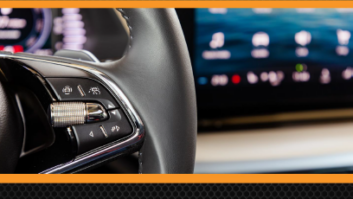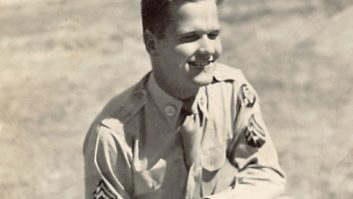The Electronic Program Guide
May 2, 2009 12:00 PM, By Rick Ducey
What’s on the radio? As more stations not only go digital but also offer multicast services, this question gets harder and harder for listeners to answer. As of March 2009, according to BIA Advisory Services, there were 1,887 HD Radio stations on the air. Many of these digital stations also offer one or more multicast services. Digital subscription services such as cable and satellite TV, and radio all offer guide services. Most homes subscribe to a cable or satellite service and get the benefit of the service’s program guide for broadcast television stations carried on these services. In addition, broadcast digital television signals carry over-the-air guide information the stations transmit themselves. In stark contrast, radio sends its signal right to the listeners’ receivers with no intermediary to produce a master program guide. Radio broadcasters must provide their own guide information. Among the electronic media, broadcast radio may be the hardest for the audience to answer the simple question, �What’s on?�
Without a guide, the three most common tools radio listeners use to figure out what’s available are their self-programmed tuning buttons (which narrows the listener’s options to a half dozen or so pre-programmed channels), and the seek and scan buttons. To make the most of these tools, listeners must practice enough patience to listen through the undesirable content before they pick the station with the desirable content. Even then, a listener may be immediately satisfied by the current offering on a new-found channel, but must spend time with the channel to get a sense of its programming format and style. And unlike television, radio receivers and their displays are more limited in how they convey information. Finally, unlike all but the most cutting-edge TV services, radio is a mobile medium � what exactly is receivable at any given location varies, placing a new design constraint on a digital radio program guide. Listeners will not want to be burdened with a list of all stations in the market, half of which are out of the receiver’s range. Television viewers enjoy the benefits of on-screen electronic program guides featuring the usual day/time program grids as well as search, bookmarking, digital recording and even sorting by content type among other features. Television as a medium offers its viewers far more transparency and control in finding content than radio can provide its listeners.
Getting started
To jump start an industry solution, the NAB Fastroad technology initiative, funded by the National Association of Broadcasters, decided that the problem of letting listeners know what’s on HD Radio was significant enough to merit further research and development. BIA Advisory Services and Broadcast Signal Lab jointly submitted the winning proposal for developing an Electronic Program Guide (EPG) for HD Radio. BIA and BSL teamed with the British software firm, Unique Interactive, which has extensive experience in developing a commercially deployed electronic program guide for DAB in Europe. Ibiquity Digital has also provided critical technical support for this project.
NAB Fastroad divided work on the EPG into two phases to design, develop and test an Electronic Program Guide (EPG) solution for HD Radio broadcasting. Phase 1 was completed fall 2008. The goals for Phase 1 were to (1) develop and document a set of comprehensive business requirements; (2) develop preliminary and then a final EPG architecture, and (3) recommend a market for field trials. The project team has completed Phase 1 work in researching business and functional requirements and developing specifications. The business requirements document is publicly available at the Fastroad website, and the project team invites industry review and input. The field trial will be conducted with the cooperation of radio stations supporting this effort in the Boston radio market, including Worcester, MA, and Providence, RI.
The Electronic Program Guide
May 2, 2009 12:00 PM, By Rick Ducey
Phase 2 efforts to develop EPG software and then lab test it before conducting field trials are now underway with the goal of completion by the fall of 2009. Once the project team started tackling the problem of developing a radio EPG service, however, it quickly became apparent that to create a successful business and technical model for a universal radio program guide service is more complicated than it appears on the surface. For example, in the case of television, a cable or satellite operator obtains and provides a common program guide for all of its services. Also, there are national program schedule databases for television programming that are routinely fed program guide information from the individual stations and networks. Finally, there are third parties who provide and operate program guide services. None of this infrastructure exists for radio.
Because radio is a medium that serves its audience directly rather than via a cable or satellite distribution platform the way most broadcast TV is watched, radio stations must take primary responsibility for delivering program information for what’s on radio. And since the locations of radio transmitters are so geographically diverse, the radio signals received on the northern side of a market will be significantly different from the signals received on the southern side. Who will transmit all this program data and how will the receiver make sense of it?
The BIA/Broadcast Signal Lab/Unique Interactive project team envisions four possible models for EPG data delivery.
Four Models for EPG Delivery
- Parochial Model – each station transmits only its own EPG data.
- Shared Model – each station transmits all market EPG data (at least high level data without details).
- Master Station Model – one or more stations transmit market level EPG data for all other stations.
- Network Model – stations transmit “pointers” to EPG data sources which can include over the air sources as well as other sources such as Internet-based program guides.
Figure 1 shows how the Electronic Program Guide data could flow from source to listener. Program guide data can be provided by the program source (network or program syndicator), automation systems, traffic systems or input manually by station personnel. A third-party EPG service bureau can provide some or all of these services. Another function of a service bureau is to scrub the data for consistency, accuracy and formatting. Once the EPG data has been acquired and prepared for delivery to the listeners, it can be sent either over-the-air or over the Internet to receivers for display to listeners.

Figure 1. Possible EPG data flow (Enlarge image)
The Electronic Program Guide
May 2, 2009 12:00 PM, By Rick Ducey
The listener experience
How might this look to listeners? The examples in Figure 2 (next page) are actual displays from a Unique Interactive commercial deployment of an EPG service in the United Kingdom. In this example of a live service, a listener can drill down for EPG information on a favorite station. Starting from the top left, the listener first selects a station (Talksport), then selects a day (25 June – 26 June), then selects a time period (16:00-18:59), then finally selects the program. The receiver displays show some program-related information. The user can then directly tune to the station, or set up a reminder to listen or a recorder to capture the program.
Notice also that the EPG display can be used for a call to action. The example here shows a call to action inviting the listener to call the show (on a telephone number that costs the listener 10 pence (15 cents) per minute) or send a text message to the show (with a 50-pence (74 cents) charge plus any other applicable text fees for that listener’s mobile phone service plan). Hot links to websites or social networking services can be selected to connect the listener to information about the program or its sponsors.
Unique Interactive’s experience is that about 10 percent of the DAB receivers in the U.K. market are currently equipped with EPG capability, and the results are encouraging. The BBC uses an EPG service both via the Internet and over the air that makes possible a type of multicast programming and scheduling promotion that would not otherwise be possible.
The benefits of an HD Radio EPG service from a listener’s perspective makes the radio more convenient to use. EPGs will enable a recording solution that will introduce time-shifting to radio, something television viewers have long enjoyed. For receiver manufacturers, EPG receivers offer an opportunity to increase profit margin on unit sales by providing value-added features and functionality. EPGs can help broadcasters by supporting forward promotion and helping listeners discover their stations and programming more effectively.
The Electronic Program Guide
May 2, 2009 12:00 PM, By Rick Ducey

Figure 2. EPG displays from an EPG application in the UK. First, select a channel.

Then select the date.

Then select the time and program.

The listener receives details about the program.
The Electronic Program Guide
May 2, 2009 12:00 PM, By Rick Ducey
To suceed, an EPG must appear as a coordinated service. Its power will come from the collective information it provides about all stations in a market. The EPG service for HD Radio stations can be a rising tide that lifts all radio broadcasters, giving a new face to an old medium, at a time when it can use a good competitive boost.
The author recognizes other members of the project team: David Maxson, Broadcast Signal Lab; Skip Pizzi, EPG consultant to BIA; and Adrian Cross, Unique Interactive. David Layer of the NAB is the NAB Fastroad HD Radio EPG program manager.
Ducey is the chief strategy officer for BIA Advisory Services.
Links
www.nabfastroad.org
www.bia.com
Open Mic: Elevated sidebands
In the time since the idea of increasing the power level of the digital sideband carriers in the hybrid HD Radio signal, debates on the idea, and the specific power level have ensued….
Sample and Hold: 1,000 multicasts and counting
Mutlicasting, the ability to transmit more than one program stream on the FM HD Radio path, is one enhancement that can show a direct result right now….












